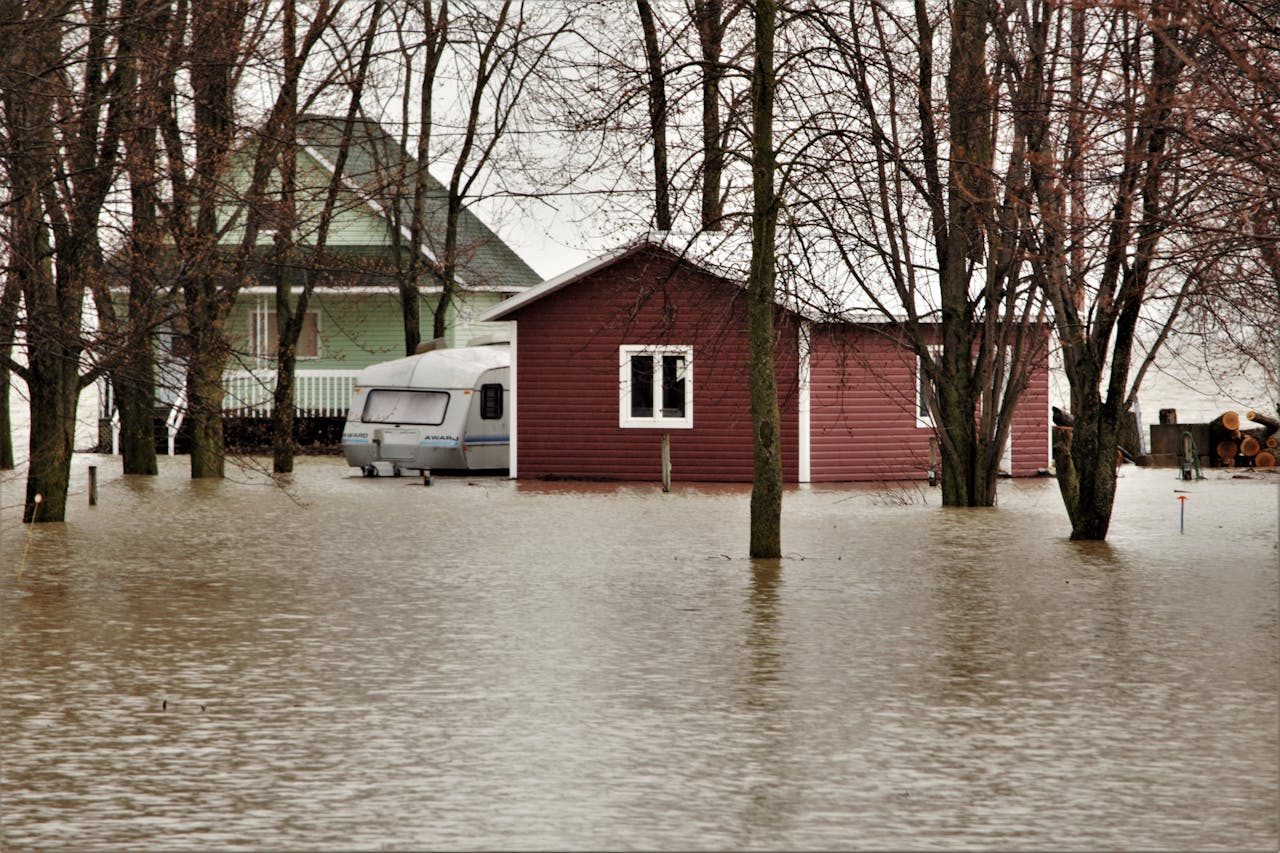PROPERTYSPARK ARTICLE
Understanding Flood Insurance: A Comprehensive Guide+

What is Flood Insurance?
Starting with the basics, you won’t invest in flood insurance if you don’t actually know what it is. Flood insurance is a form of property insurance that specifically covers the cost of damage that is caused by flooding. There are two primary types of flood insurance in Illinois as well as in several other states:
- Federal Emergency Management Agency (FEMA) Flood Insurance Program: This government-backed program offers flood insurance to property owners who live in flood-prone areas
- Private Flood Insurance: Some private insurance companies also offer flood insurance policies, which may provide additional coverage options or more flexible terms for businesses or residents who need as much
Flood insurance policies most often come with coverage limits and deductibles as with other types of insurance. The coverage limit refers to the maximum amount that an insurance company or program will pay out for damages caused by a flood, whereas the deductible is the amount you must pay out of pocket before the insurance coverage actually kicks in.
Why is Flood Insurance Important?
Flooding is a natural disaster that can cause significant damage to your home, business, and the community as a whole. Even if you don’t personally live in a flood-prone area, you might still be at risk. Many homeowners find themselves shocked when they realize that their standard homeowner’s insurance policies sometimes do not cover flood damage or offer very little coverage which is why reviewing your policy is important. Flood insurance can provide you with essential financial protection in the event of a flood by covering the cost of repairs, replacement of damaged property, and even temporary living expenses.
Understanding the Risks of Flooding
Determining your specific flood risk is essential for choosing the right level of flood insurance coverage. FEMA provides flood maps that outline areas at risk of flooding and it is constantly updated in real-time. By understanding your flood zone, you can assess your vulnerability and take steps to protect your property with one of the following:
The National Flood Insurance Program (NFIP)
The NFIP is the primary source of flood insurance coverage offered by the federal government, but it is more exclusive than private flood insurance. To be eligible for coverage under NFIP your property must be located in a participating community as well as within a designated flood hazard area. Coverage options under the NFIP vary but typically include building coverage and coverage for the content within. There are limitations on NFIP coverage including waiting periods for new policies and maximum coverage limits, though, so be sure to review any policy you’re considering.
Private Flood Insurance
The NFIP is arguably the more common source of flood insurance, but private insurance companies also offer flood insurance policies. These policies tend to be on more flexible terms than one from the NFIP or have additional coverage options, but they are usually quite expensive. For businesses with larger budgets, though, private flood insurance is a great alternative to the NFIP when you need customizable coverage.
Flood Insurance Premiums 101
Understanding flood insurance premiums will help you further evaluate whether a flood insurance plan is right for you or not. For those unaware, an insurance premium is simply the price you pay on a monthly, sometimes yearly, basis to keep a policy active. This value can fluctuate greatly depending on the type of insurance, where you live, and the level of coverage you seek. Generally speaking, though, premiums are based on the following factors:
- Flood zone: Properties in higher flood zones typically have higher premiums due to the greater risk
- Building elevation: Properties located at a higher elevation may have lower premiums due to being away from potential flood damage
- Type of coverage: The amount of coverage you purchase will affect your premiums
- Flood mitigation measures: Implementing flood mitigation measures, such as elevating your home or installing flood barriers, can help reduce your premiums by reducing risk
There are more factors affecting flood insurance premiums than just the above, but these are the most relevant to keep in mind. Don’t be afraid to negotiate with an insurance company or reach out to alternative companies to see if you can get a better rate on your flood insurance policy.
How to File a Flood Insurance Claim
In the event you have gone through a flood and are in need of activating your flood insurance policy, heed the following steps to submit a claim:
- Contact your insurance company immediately. Provide them with details about the flood and any damages to your property
- Document the damage. Take photos and videos of the damage to your property, both inside and out
- Gather necessary documentation. Gather documents which may include receipts for repairs, estimates from contractors, and proof of ownership of the property
- File a claim. Submit a written claim to your insurance company, including all relevant documentation
- Cooperate with the insurance adjuster. The adjuster will inspect your property and assess the damage themselves
- Review your claim settlement. Once the insurance company has completed its investigation, you will receive a settlement offer which you should review carefully and negotiate if necessary
Protect your property from flood damage
Flood insurance is a very valuable tool that can help protect your property and financial well-being in the event of a natural disaster. By understanding all the different nuances of flood insurance described above, you can better assess your flood risk and choose the right amount of flood insurance for your needs. It’s always better to be prepared for the unexpected, especially when the unexpected is as dangerous as flooding.
Learn how to Become a Top Agent with the Guaranteed 5 Min/Week System
No social media experience needed
Free webinar seat (limited quantities)
Learn the guaranteed 5 min/week system
Become a social media superstar
Constantly get new leads
Beat the competition
Get a special webinar deal
This Agent Tripled His Commissions Just With Social Media
Learn how this real estate agent tripled his commissions just with social media and how you too can become a social media superstar.
Why You Can’t Just “Boost” Your Real Estate Listing
That big blue button has tempted you before right? You want to Facebook Boost your Real Estate listing. Find out why you shouldn’t!
How Much Should Realtors Spend On Social Media
A question we get often from Realtors is “how much should I spend on social media?” Find out exactly how much to spend and how to spend it without getting ripped off!



